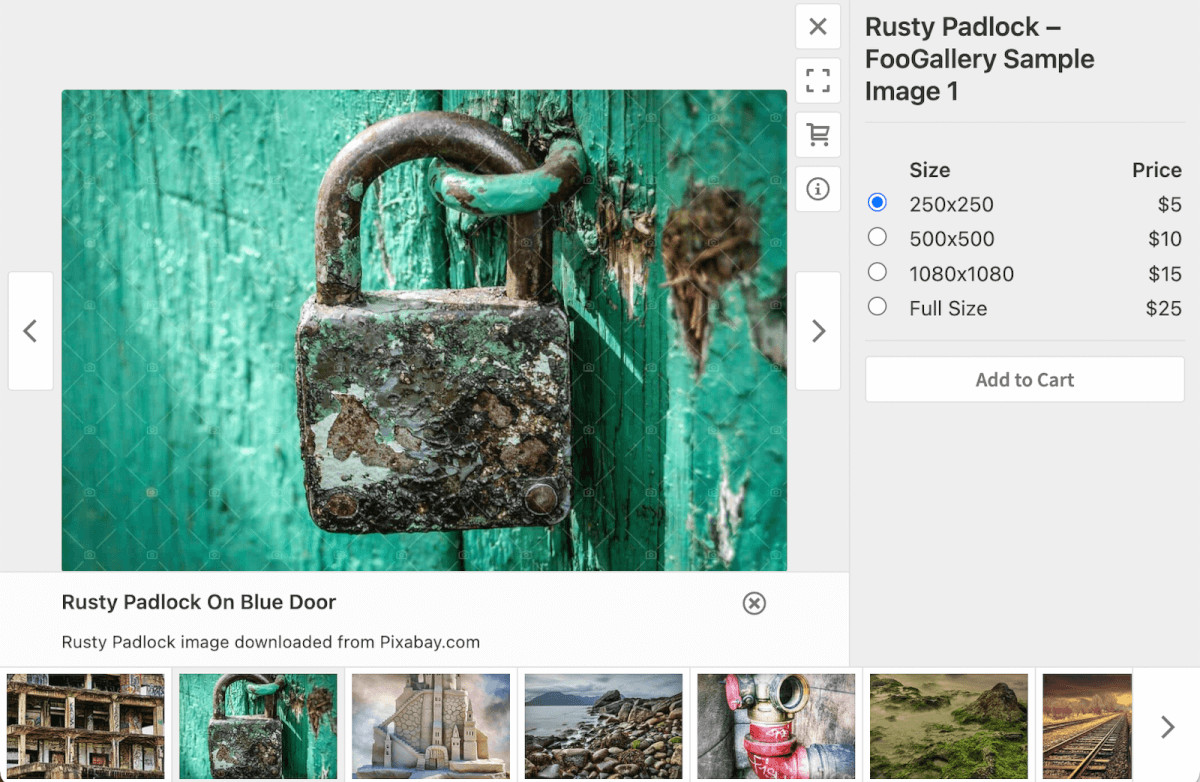If you’re looking to turn your passion for photography into profit, selling your photos online is a fantastic avenue. However, navigating the online landscape can be overwhelming. This guide is your turning point, packed with essential tips and information to help you start selling your photography online effectively and easily.
We’ve structured this guide into two key sections to get you started on the right foot:
Part One: Choosing the Right Online Platform to Sell Photos
Part Two: Beginner-Friendly Tips for Selling Photos Online
Part One: Top Platforms for Selling Your Photos Online
One of the first and most crucial decisions when venturing into selling your photography online is choosing the right platform. Where you decide to showcase and sell your work significantly impacts your control, brand building, and income potential.
While numerous platforms cater to photographers of all levels, some offer greater advantages in terms of control, branding, and long-term profitability.
Let’s explore the leading platforms for selling your photos online. Here’s a quick overview before we delve into the specifics:
| Platform | Initial Cost | Transaction Fees | Category | Functionality | Key Features |
|---|---|---|---|---|---|
| WordPress | Varies (Hosting & Domain) | Varies (Payment Gateway Fees) | CMS | Website building, blog integration, SEO tools | Full control over your brand and website, strong SEO capabilities, extensive plugin options including gallery plugins |
| Shopify | $29/month (Basic Plan) | 2.9% + 30¢ per transaction | Ecommerce platform | Online store creation, product management, marketing tools | Easy to set up and manage, robust marketing tools, highly scalable for growing businesses |
| Adobe Stock | Free to join | 15% – 35% commission | Stock Photo Marketplace | Sell/license stock photos, integration with Adobe Creative Cloud | Access to a vast audience of Adobe Creative Cloud users, seamless integration with Adobe software |
| Shutterstock | Free to join | 15% – 40% commission | Stock Photo Marketplace | Sell/license stock photos, global reach and large audience | Huge global audience, well-established stock photo marketplace |
| Alamy | Free to join | 40% commission | Stock Photo Marketplace | Sell/license stock photos, caters to both editorial and commercial content | Caters to editorial content, competitive commission rates for non-exclusive contributors |
| iStock Photo | Free to join | 15% – 45% commission | Stock Photo Marketplace | Sell/license stock photos, diverse marketing tools | Part of Getty Images, diverse marketing and promotional tools |
| Getty Images | Free to join | 20% commission | Stock Photo Marketplace | Premium stock photo sales, high visibility and prestige | High visibility to premium clients, prestigious platform for professional photographers |
| 500px | Free to join | 60% commission (non-exclusive) | Photography-Sharing Platform | Photo sharing, community engagement, and licensing options | Strong photography community, combines portfolio showcasing and selling |
| PhotoShelter | $10/month (Basic Plan) | 8% – 10% per sale | Photography-Sharing Platform | Create custom photography websites, client proofing and sales tools | Designed specifically for photographers, offers customizable websites and client management tools |
| Etsy | $0.20 per listing | 6.5% transaction fee | Ecommerce platform | Sell handmade/vintage items, niche market focus | Niche market for art prints and unique photo products, strong community of buyers and sellers |
Each platform presents its own set of advantages and potential disadvantages, which we will explore in detail below to help you make an informed decision.
The Power of Owning Your Platform: Your Own Photography Website
Creating your own website offers the most significant advantage: complete control. This platform allows you to dictate how your photos are presented, priced, and sold. It’s the optimal path for building a distinct brand and fostering a loyal customer base.
Let’s weigh the pros and cons of establishing your own photography website:
Pros:
- Full Control: You have complete ownership and control over every aspect of your website, from design and branding to pricing and sales policies.
- Eliminate Commission Fees: Maximize your earnings by keeping all revenue from your sales, aside from standard payment processing fees.
- Unmatched Customization: Tailor your website to perfectly reflect your brand and art, showcasing your photography in the most impactful way.
- SEO Advantages: Optimize your site for search engines to attract organic traffic, increasing visibility and potential sales.
- Direct Customer Relationships: Build and nurture direct relationships with your customers, fostering loyalty and enabling personalized marketing efforts for repeat business.
Cons:
- Initial Setup and Ongoing Maintenance: Requires time and potentially technical skills to set up and maintain the website, including managing hosting, security, and software updates.
- Costs Involved: Incur ongoing expenses for hosting, domain registration, website themes, and necessary plugins.
- Self-Driven Marketing: Responsibility falls on you to drive traffic to your site through marketing and SEO efforts, which can be time-consuming and require expertise.
- Building an Audience from Scratch: Unlike established marketplaces, you start with zero built-in audience, and attracting visitors takes time and consistent effort.
- Direct Customer Support: You are solely responsible for providing customer support and resolving any customer issues.
For building your own photography website, WordPress and Shopify stand out as leading platforms. Let’s examine them further.
1. WordPress (with WooCommerce)
 WooCommerce WordPress plugin interface for selling photos online
WooCommerce WordPress plugin interface for selling photos online
Our top recommendation for photographers serious about selling online is to build your own WordPress website.
WordPress is remarkably affordable to set up. You’ll need a managed WordPress hosting provider, a suitable theme to design your site, and a few essential plugins to extend functionality. Most of these involve reasonable annual or monthly fees.
To enable online transactions on your WordPress site, we highly recommend integrating WooCommerce. This powerful, free e-commerce plugin provides all the necessary features to start selling your photos directly from your website.
A significant advantage of using WordPress and WooCommerce is complete ownership. You maintain full control over your website and content, and you avoid commission fees on your photo sales. You have the freedom to set your own prices, unlike many platforms that dictate pricing structures.
While WordPress doesn’t offer built-in marketing and distribution support, its inherent SEO-friendliness is a major asset. You can optimize your website and content for search engines, ensuring potential customers find your photos through organic search results.
Furthermore, WooCommerce’s marketing integrations empower you to connect with various marketing platforms. This helps you reach your target audience effectively, wherever they are most active online. Useful marketing integrations for selling photography on WooCommerce include email marketing tools, social media integrations, and advertising platforms.
If you choose WordPress, we strongly recommend using a performance-optimized gallery plugin like FooGallery. A gallery plugin is essential for photographers, allowing you to create customizable, professional-looking photo galleries anywhere on your website.
The Best WordPress Gallery Plugin
FooGallery stands out as an easy-to-use WordPress gallery plugin, known for its stunning gallery layouts, speed, and SEO optimization.
Here’s an example of how a photography website can look with FooGallery, showcasing beautiful images in a visually appealing layout.
 Example photography website using FooGallery and WooCommerce for selling photos online
Example photography website using FooGallery and WooCommerce for selling photos online
For a detailed, step-by-step guide, explore our comprehensive tutorial on selling images with WordPress, FooGallery, and WooCommerce.
2. Shopify
Shopify is another leading e-commerce platform that provides a robust solution for creating your own photography website.
Shopify’s advantages include its user-friendly setup and management, professionally designed themes, extensive customization options, and a vast app store for added functionality. However, it’s generally more expensive than WooCommerce, especially in the long run.
Shopify offers various pricing plans, starting at $29 per month for the Basic plan. This includes everything needed to launch and operate your online store. While upgrading to higher plans may not be essential initially, you might miss out on features like advanced reporting.
Hosting is managed by Shopify, simplifying website maintenance. Shopify also offers a wide selection of themes and customization options, enabling you to create a professional and visually engaging storefront to showcase your photos.
Shopify charges a transaction fee of 2.9% + 30¢ per sale when using Shopify Payments. Choosing an external payment gateway may incur additional transaction fees.
Top Stock Photo Marketplaces for Selling Photos
Stock photo marketplaces are ideal for photographers aiming to sell high-quality images to businesses, marketers, and content creators. However, these platforms operate under specific terms. Images must meet platform requirements, and you will pay a commission on each sale.
Here’s a summary of the pros and cons of selling your photos on stock photo platforms:
Pros:
- Vast Customer Base: Access to a global audience of potential buyers, significantly increasing your sales potential.
- Passive Income Potential: Earn passive income once your photos are uploaded and approved, generating revenue over time.
- High Visibility: Your photos are showcased to millions of potential buyers, maximizing exposure and discoverability.
- Marketing Support: Platforms often invest in marketing their libraries, which indirectly promotes your photos to a wider audience.
- Contributor Resources: Many platforms offer resources and tools to help contributors succeed, including performance analytics and trend insights.
Cons:
- Commission Fees: Platforms take a percentage of each sale as commission, typically ranging from 15% to 45%, reducing your profit margin.
- Highly Competitive Market: Intense competition among photographers makes it challenging to get your photos noticed and stand out.
- Limited Pricing Control: Prices are generally set by the platform, limiting your control over your earnings per image.
- Stringent Approval Process: Photos undergo a rigorous approval process, which can be time-consuming, and not all submissions are accepted.
- Exclusive Agreements: Some platforms offer exclusive agreements that may restrict your ability to sell the same photos on other platforms, limiting flexibility.
If stock photo marketplaces align with your business goals, consider these popular platforms:
3. Adobe Stock
Adobe Stock is a free platform to join where you retain ownership of your uploaded photos. However, Adobe Stock has a quality control process: all content is reviewed for quality, keyword accuracy, legal compliance, and commercial value before acceptance. Model releases are required for recognizable people, and property releases for private properties.
Royalties on Adobe Stock start at 33%. Payment requests can only be made after accumulating at least $25 in royalties and after a 45-day period from the first sale.
4. Shutterstock
 Shutterstock logo representing the stock photo platform
Shutterstock logo representing the stock photo platform
Shutterstock is another leading platform for selling your images. You must hold full ownership or copyright of the images and provide model and property releases as needed.
While you retain copyright, you grant Shutterstock permission to license your images through a contributor agreement. Adherence to guidelines, including relevant keyword usage, is required.
Shutterstock employs a tiered royalty system based on the number of image licenses sold:
- Level 1: 15% for up to 100 image licenses.
- Level 2: 20% for 101 to 250 licenses.
- Level 3: 25% for 251 to 500 licenses.
- Level 4: 30% for 501 to 2,500 licenses.
- Level 5: 35% for 2,501 to 25,000 licenses.
- Level 6: 40% for over 25,000 licenses.
Video royalties follow a similar tiered structure. Payments are issued once earnings reach a minimum of $35. This tiered system favors contributors with high sales volumes, making it potentially more challenging for photographers starting out.
5. Alamy
Alamy is a recognized stock photography platform valued for its competitive commission structure and diverse content range, including stock photos, vectors, panoramic images, and videos.
Alamy’s contributor agreement allows you to submit content that meets their standards, which Alamy then licenses on your behalf. You retain control over your submissions, and Alamy states that they are not edited.
Alamy offers a compelling royalty structure:
- Non-exclusive contributors: Earn up to 40% commission per sale.
- Exclusive contributors: Earn up to 50% commission for images exclusively available on Alamy.
Alamy also offers a 100% commission rate for student submissions through their student scheme.
6. iStock Photo
 iStock by Getty Images logo representing the stock photo platform
iStock by Getty Images logo representing the stock photo platform
iStock Photo, a Getty Images company, positions itself as a platform “created by creatives, for creatives.” It offers opportunities for photographers producing high-quality, unique content.
Joining iStock is free. You apply and submit work samples for review. Upon acceptance, you can upload and sell photos without upfront costs.
iStock uses a royalty-based payment system. Royalty rates depend on contributor exclusivity:
- Non-exclusive contributors: Earn 15% to 20% royalties per sale.
- Exclusive contributors: Earn 25% to 45% royalties, varying with sales volume and content type.
Exclusive contributors receive higher royalties and benefit from increased exposure and marketing support from iStock.
7. Getty Images
Getty Images boasts a user base exceeding 800,000, providing a vast audience for your photos and videos. Application requires uploading original content via their app. Acceptance leads to a non-exclusive agreement.
Contributor content may be showcased on both Getty Images and iStock. Royalties range from 15% to 45% on licenses sold, with potential for higher commissions as an exclusive contributor.
Typical royalty rates for photographers on Getty Images are:
- Royalty-free still images: 20% royalties per sale.
- Royalty-free video clips: 25% royalties per sale.
Copyright remains with the photographer. While Getty Images offers significant earning potential, competition is high, requiring a substantial volume of stock image sales to generate significant income.
Photography-Sharing Platforms
Photography-sharing platforms differ from stock photo sites. Any photographer can join and create a photography portfolio without initial approval. However, they still charge commissions on sales, and photographers compete for visibility.
8. 500px
 500px logo representing the photography sharing platform
500px logo representing the photography sharing platform
500px is a popular photography-sharing platform that blends community engagement with a marketplace for selling photos.
Joining 500px is free, with both free and paid membership plans. Free plans have limited uploads, while paid plans (starting at $5/month) offer unlimited uploads and advanced features.
Getting started on 500px is straightforward via their app, enabling you to market yourself as a professional photographer. However, with a community of over 18 million users, standing out requires effort.
Royalties are earned on sales, with higher rates for exclusive licensing through 500px’s partnerships with Getty Images and VCG (Visual China Group):
- Non-exclusive contributors: Earn 30% royalties per sale.
- Exclusive contributors: Earn 60% royalties for exclusive photos on 500px.
9. PhotoShelter
 PhotoShelter logo representing the photography platform for portfolio and sales
PhotoShelter logo representing the photography platform for portfolio and sales
PhotoShelter is a cloud-based platform for photographers to store, promote, and sell photos online. It facilitates portfolio creation, print and license sales, and secure file delivery. Portfolio features and cloud storage vary by plan.
PhotoShelter offers three pricing plans with different storage and features:
- Basic plan: $10/month (billed annually) with 4GB storage.
- Standard plan: $25/month (billed annually) with 100GB storage.
- Pro plan: $45/month (billed annually) with unlimited storage.
Transaction fees also vary by plan:
- Pro plan: 8% transaction fee.
- Standard plan: 9% transaction fee.
- Basic plan: 10% transaction fee.
- Starter plan: 30% transaction fee.
Ecommerce Marketplace Platforms
Ecommerce marketplaces offer another option for selling photos online. These platforms allow individuals and businesses to sell diverse products, including photos, directly to consumers.
These platforms involve costs such as monthly store fees and transaction fees. A potential disadvantage is that many shoppers on these platforms may not be specifically seeking photography, potentially narrowing your target audience.
Here are pros and cons to consider:
Pros:
- Large Customer Base: Access to a vast audience simplifies reaching potential buyers without extensive independent marketing.
- Ease of Use: Platforms are designed for user-friendliness, enabling shop setup and listing management with minimal technical expertise.
- Integrated Payment Processing: Ecommerce platforms provide integrated payment systems, simplifying payment acceptance from customers.
Cons:
- Fees: Selling involves various fees, including listing, transaction, and payment processing fees.
- High Competition: Numerous sellers create intense competition, making it challenging to stand out and attract buyers.
- Limited Customization: Customization options are limited compared to standalone e-commerce websites.
- Branding Limitations: Establishing a unique brand identity is challenging due to uniform listing appearances and platform branding.
- Policy Compliance: Sellers must adhere to platform policies, which can change and impact sales practices.
Etsy is a prominent example of an e-commerce marketplace in this category.
10. Etsy
While Etsy is popular for photographers selling prints, digital downloads, and photo-related products, finding a dedicated photography audience can be challenging.
Setting up an Etsy shop is relatively low-cost:
- Listing fee: $0.20 per item, renewed every four months if unsold.
- Transaction fee: 6.5% of the total sale price, including shipping.
- Payment processing fee: Varies by country; in the U.S., it’s 3% + $0.25 per transaction.
Initial costs are minimal beyond these fees. Etsy and similar platforms are arguably best suited for side hustles or diversifying revenue streams beyond your primary photography website. Alternative platforms include eBay and Amazon Handmade.
Part Two: Top Tips For Selling Photos Online
Considering the options, using your own WordPress website emerges as the most advantageous method for selling photos online. It provides greater control and avoids marketplace limitations and high commissions.
To maximize your WordPress website’s effectiveness, we’ve compiled beginner-friendly tips for selling photos online:
Defining a Photography Niche
As you build your photography career, specializing in a specific area, such as people, nature, or architecture, is beneficial. Customers seeking a particular style will return to a photographer known for that specialty. Niche specialization helps you stand out from generalist photographers.
For example, “nature photography” is broad. Consider niches like macro photography, long-exposure waterfall shots, or telephoto wildlife photography. Defining your niche attracts an audience interested in your specific photographic style.
 Example of macro photography showcasing water droplets on a plant
Example of macro photography showcasing water droplets on a plant
Understanding Market Demand
Aligning your photographic passion with current market demands is strategic. Market trends fluctuate – for instance, images featuring Ukrainian national colors surged in 2022, and photos of people in face masks were in demand during the COVID-19 pandemic. Google Trends is a valuable tool for researching trending photography styles.
Conversely, timeless photographic niches exist. Review Shutterstock’s top-selling photos to identify consistently popular themes like everyday activities (buying cars, homes, or online shopping). Brands frequently need visuals representing these common scenarios.
Combining your niche passion with market demand sets a strong foundation for success.
Installing the Right Tools to Sell Photos Online
Beyond a functional WordPress site, digital tools – or “plugins” – enhance photo display and sales. Focus on three key plugin categories: galleries, lightboxes, and e-commerce functionality.
A website gallery plugin is essential for showcasing your images effectively. Galleries optimize image display, ensure mobile-friendliness, and allow you to add descriptive information to your photos.
FooGallery is a highly recommended gallery plugin.
I looked at all the galleries when I was building my new photography site. I wanted one that was elegant looking on all platforms and let me tell a story for every photo. Foo was the best.
Carla
Read more reviews for FooGallery
FooGallery PRO Commerce is particularly ideal due to its integration with WooCommerce. This integration simplifies selling photos directly from your galleries. Customers can add photos to their carts directly from the gallery, streamlining the purchase process.
A lightbox plugin, like FooBox, enhances the viewing experience by displaying photos in an SEO-optimized gallery without website distractions.
Below is a gallery built with FooGallery and FooBox, demonstrating lightbox functionality. Click on an image to see the lightbox in action!
Image by Capri23auto from Pixabay
View Image in Lightbox
Image by Christoph from Pixabay
Image by Arek Socha from Pixabay
View Image in Lightbox
Image by Frank Winkler from Pixabay
Image by Егор Камелев from Pixabay
View Image in Lightbox
Image by Gerhard Gellinger from Pixabay
Image by Johannes Plenio from Pixabay
View Image in Lightbox
Image by ombadesign from Pixabay
Image by rawpixel from Pixabay
View Image in Lightbox
Image by skeeze from Pixabay
Image by Susan Cipriano from Pixabay
Protecting Your Work
Legal aspects are crucial when selling photos online to protect your digital assets and respect others’ rights. Key considerations include:
Licensing Your Photos:
- Commercial Use: Allows use in marketing and advertising materials.
- Retail Use: Permits use on physical products like merchandise.
- Editorial Use: For use in news, blogs, and magazines (non-advertising).
- Exclusive Rights: Sold to a single buyer, typically at a premium price.
- Rights Managed: One-time use with specific restrictions defined.
- Creative Commons: Free use with conditions like attribution.
- Royalty-Free: Users can use the photo for various purposes without recurring fees.
- Public Domain: No copyright, free for any use (rarely applicable to selling).
Legal Considerations:
- Right of Publicity: Obtain model releases for recognizable individuals in photos you intend to sell commercially.
- Property Releases: Required for identifiable private properties featured in your photos.
- Copyright Issues: Avoid using copyrighted material without permission.
- Commissioned Work: Secure client approval for using commissioned photos in your portfolio or for commercial purposes.
For WordPress website protection, FooGallery PRO Commerce offers watermark functionality to watermark your photos easily. Watermarks display on your photos like this:
Marketing Your Photos Online
Effective marketing significantly increases photo sales and visibility. Key strategies include:
- Limited-Time Sales: Create urgency with discounts and special offers. Use plugins like FooBar to add sale announcements, banners, countdowns, and CTAs to your website galleries.
- Social Media Marketing:
- Instagram: Showcase visually captivating images to build a visual portfolio.
- Facebook: Share portraits and wedding photos (mindful of publicity rights) to reach personal networks.
- LinkedIn: Promote commercial images and professional portraits to business and professional audiences.
- Boost Social Media Posts: Utilize sponsored posts on social media platforms to target specific demographics for wider reach.
- Blogging: Share SEO-optimized insights into your photography, create tutorials, and discuss photographic themes to attract organic traffic.
- Email Marketing: Convert blog content into email newsletters to maintain audience engagement and inform them of new work and promotions.
- Collect Customer Testimonials: Request testimonials from satisfied customers to build credibility and social proof, displaying them on your website and social media.
Integrating these marketing strategies creates a comprehensive plan to drive traffic and boost sales. For more in-depth marketing strategies, this article about photography marketing offers further insights.
FAQs
What kind of photography sells best online?
500px suggests certain photo characteristics correlate with higher sales:
- Photos of individuals perform better than group shots.
- Candid images are preferred over posed photographs.
- Wide shots tend to sell more than close-up photography.
- Subjects looking away from the camera are often more commercially appealing.
- Unidentified subjects tend to sell better for broader use.
- Photos taken at dawn or dusk are frequently top sellers due to appealing light.
While focusing on your photographic passion is crucial, incorporating these insights may enhance your sales potential.
How much can you expect to make selling photos online?
Online photo earnings vary widely based on platform, photo quality and uniqueness, marketing efforts, and demand for your photographic style. Photographers selling prints or digital downloads directly from their websites can set prices, typically ranging from $10 to $100+ per photo.
Can I use multiple online platforms to sell my photos?
Yes, selling on multiple platforms is common and recommended to maximize reach and sales. Benefits include accessing a broader audience, diversifying income streams, and targeting different market niches and customer segments.
Start Your Journey to Selling Photos Online Today
Selling photos online is competitive, but with talent, persistence, and the right tools, success is achievable.
WordPress with WooCommerce offers the most promising platform for selling your photography. It provides control, ownership, and avoids direct competition within marketplaces. Utilizing our top tips will strengthen your online presence and increase your sales.
Essential tools streamline the process. FooGallery is a must-have WordPress plugin for creating stunning galleries. Its WooCommerce integration simplifies selling photos directly from your website.
Try out FooGallery today and begin selling your photos on WordPress!
The Best WordPress Gallery Plugin
FooGallery is an easy-to-use WordPress gallery plugin, renowned for its stunning layouts, speed, and SEO focus.

